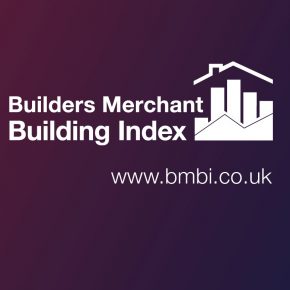
Hemsec’s case for metal-faced composite panels for construction
Modern Methods of Construction are a new broom sweeping through the UK Building sector, with traditional brick walls starting to get brushed aside, according to a growing number of industry players. Hemsec have taken a closer look…
At a time when the majority in the sector are exploring alternative methods and materials, some companies are already experienced at using metal-faced composite panels for construction across a growing number of industry sectors.
Phil Montgomery, Account Manager at Hemsec, commented: “If the masses could see the ease of build and associated benefits when using composite panels, then a growing number of builders would question the use of traditional building materials such as brick and block.”
Key structural uses: panels made of steel and PIR
Composite foam injected PIR panels are ideal for products such as standard or bespoke classroom modules, toilet blocks and other educational annexes.
Schools are able to order with different configurations and finishes, greatly speeding up delivery and construction time. Blocks of flats, homes and commercial buildings are also being built using these panels.
Hemsec is known for working in partnerships with building designers and construction companies, so it becomes relatively simple for companies to work to highly cost-effective programmes.
Hemsec’s composite panels form an integral part of modular building methods, creating a strong, well-insulated and thermally efficient structure, which is also aesthetically pleasing.
Although some customers are reluctant to move away from traditional building methods, the advantages are clear, especially in a transforming market where requirements change regularly.
The benefits of insulated panels versus traditional methods
Speed of assembly
Phil Montgomery said: “The time on site is so much shorter and it can be programmed with confidence, because it’s not weather-dependent. In the main, most modular buildings are constructed off-site in purpose-built factories, leaving minimal installation when the product goes to site.
“For example, a modular block of single-unit flats takes about 16-17 weeks as opposed to a year for traditional methods of construction, which is a huge advantage.
“Less time on site means more money made. It has always been a challenge to make money in construction, and any builder who can see a way of making more profit is going to find panels a good proposition.
“The fact that they also lead to better quality, more thermally-efficient buildings, surely makes it a viable decision to start using these materials.”
Quality and safety of build
Improved build quality is a major advantage, according to Phil Montgomery. The company’s customers report a tendency towards far fewer complaints from the end users of panel-constructed buildings, probably because a panel doesn’t move once erected, therefore there is little or no chance of cracking. Water ingress is also highly unlikely to occur due to the panel’s physical closed cell structure.
When it comes to safety, Hemsec is constantly testing its panels to a higher degree than almost anywhere else in the world, not only for fire performance, but also strength and adhesion. All the company’s panels hold a CE certificate and its SIPs (Structural Insulated Panels) also hold the European Technical Assessment (ETA).
Phil Montgomery added: “We have always been very strong in the refrigeration industry and our future in the construction markets is to diversify; there is an urgent need to provide low-energy, affordable buildings in the UK and Europe, and through our work with industry heads and influencers, we believe composite panels are a strong part of the solution.
“The CE accreditation and the SIPs additional ETA are critical to our ability to supply into this sector because the need to prove the safety case is absolute.”
Aesthetics and wellbeing
There is still an out-dated notion that a building constructed using composite panels may appear like an ugly pre-fabricated house from the 1950’s and 60’s, but this could not be further from the truth. It is impossible to tell the difference between a panel-built house and one made of brick and plaster today.
Chris Griffin, Hemsec’s Commercial Manager, commented: “Anything you can build traditionally, you can build using modular methods, and I would go further, and say they allow architects more flexibility to build even more creatively than with traditional methods.
“Since panels are thin but strong, the internal dimensions of a building are considerably larger, and this gives the building’s occupants more space. This in turn leads to greater wellbeing.
“It’s also easier to make homes and factories accessible to those with disabilities, and to be really creative about how a building looks because the panels are so flexible.”
Thermal efficiency
The greatest advantage to society, of using insulated panels to create a building’s structure, is their thermal efficiency and excellent U value.
With global warming being a topic that’s not going to go away, it’s becoming imperative to consider ways of making buildings exponentially better insulated.
Considering these panels are essentially the same as those used for creating cold stores and refrigeration units, it’s not difficult to grasp that they are equally efficient at keeping cold out and heat in.
This means buildings are much cheaper to heat, too – surely a huge boon for lower-paid householders and companies where making a profit is only going to get harder in the face of global competition.
Contact Hemsec:
Stoney Lane,
Rainhill,
Merseyside
L35 9LL
T: 0151 426 7171
E: [email protected]
Visit Supplier's page
Latest news

26th April 2024
Hush Acoustics optimises fleet operations by securing FORS Gold accreditation
Hush Acoustics has invested in the safety and sustainability of its commercial vehicle fleet by achieving Gold status in the Fleet Operator Recognition Scheme (FORS).
Posted in Acoustics, Noise & Vibration Control, Articles, Building Industry News, Building Products & Structures, Building Regulations & Accreditations, Building Services, Ceilings, Facility Management & Building Services, Floors, Health & Safety, Insulation, Restoration & Refurbishment, Retrofit & Renovation, Site Preparation, Sustainability & Energy Efficiency, Walls, Waste Management & Recycling
26th April 2024
Safeguard Europe: Penetrating damp - how to diagnose the damage
As Safeguard gets ready to deliver another informative session of one of its most popular webinars, the company outlines some of the most common reasons for rain penetration through brickwork.
Posted in Articles, Bricks & Blocks, Building Industry Events, Building Industry News, Building Products & Structures, Building Services, Continuing Professional Development (CPD's), Damp & Waterproofing, Facility Management & Building Services, Information Technology, Posts, Render, Restoration & Refurbishment, Retrofit & Renovation, Seminars, Training, Walls
25th April 2024
ADSA: Competence Initiative Makes Progress
The Joint Competency Initiative (JCI), in which the Automatic Door Suppliers Association (ADSA) is involved, is finalising its first framework for installers within the door, gates and shutter industry.
Posted in Access Control & Door Entry Systems, Architectural Ironmongery, Articles, Building Associations & Institutes, Building Industry Events, Building Industry News, Building Products & Structures, Building Regulations & Accreditations, Building Services, Continuing Professional Development (CPD's), Doors, Facility Management & Building Services, Health & Safety, Innovations & New Products, Publications, Research & Materials Testing, Restoration & Refurbishment, Retrofit & Renovation, Security and Fire Protection, Site Preparation
25th April 2024
BMBI: Value sales in first two months were -3.4% down
The latest Builders Merchant Building Index (BMBI) report shows builders’ merchants’ value sales were down -4.7% in February compared to the same month a year ago.
Posted in Articles, Bathrooms & Toilets, Bathrooms, Bedrooms & Washrooms, Bricks & Blocks, Building Associations & Institutes, Building Industry News, Building Products & Structures, Building Services, Civil Engineering, Concrete, Cement, Admixtures, Drainage, Floors, Hard Landscaping & Walkways, Interior Design & Construction, Interiors, Landscaping, news, Paints, Paints, Coatings & Finishes, Plant, Equipment and Hire, Plumbing, Posts, Publications, Research & Materials Testing, Restoration & Refurbishment, Retrofit & Renovation, Sustainability & Energy Efficiency
 Sign up:
Sign up: